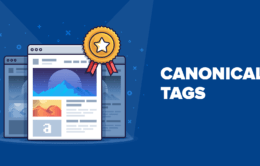We live in a world where e-commerce is booming, and big and small businesses are jumping into the online sales and services bandwagon. If you want to maintain a competitive edge in the market, you have to be able to take on the challenges that come with it. Just as customers will post positive, four, and five-star reviews for your products or services, there will be times when they post negative online reviews.
Why It’s Essential to Respond to Negative Online Reviews
You must respond to the negative reviews just as you would the positive ones. If you ignore negative online reviews, that can be detrimental to your business. Modern customers are very particular about conducting research, not just on products and services that they are considering to buy. They also want to know that they are doing business with a credible company that is serious about its business and cares for its customers.
In addition to good ratings, prospective customers are also looking at how companies are responding to negative feedback. It is essential to provide excellent quality services and products to customers. However, it’s also crucial to keep your negative online reviews at the lowest possible level. It is equally essential for you to respond to negative online reviews appropriately.
Build Your Credibility
When handled correctly, you can use bad reviews to your benefit. They allow you to express yourself and spread the word about your brand. You can also take this chance to set things right and provide outstanding customer service. Since you can do this publicly, potential customers have visibility of it.
It helps you improve your standing in the market and gives you the chance to stand out from your competitors. While it is crucial to respond to negative feedback, it is also vital to adopt the right approach. Bad reviews hurt, and sometimes they can be excessively cruel as well. It makes responding to them very difficult for you.
The Best Way to Respond to Negative Online Reviews
You may feel like retaliating, and may feel a certain amount of anger as well. But it isn’t a good idea to be impulsive with your responses. Never let your emotions dictate how you are going to respond to negative reviews. Here are some tips on how you can do this:
1. Understand The Consumer
Before you respond to negative reviews, put yourself in your customer’s place. Empathize with them and try to understand why they have posted negative feedback. It’s evident that their expectations haven’t been met, and their disappointment has led them to post a negative review. Once you have understood this aspect, you will find that your response will be different.
2. Thank Your Customers
It’s never a good idea to take negative reviews personally. Rather than being resentful, thank your customers for the time they have taken to post the review. They need to know that there is a real individual behind the business, somebody who can understand their issues.
Show your customers that you value their candid feedback and appreciate them for the time they have taken to post the review, even a bad one. Thank them for bringing the issue to their attention and apologize for the bad experience. Show them how sincere you are in trying to fix the problem and that you will strive to do better.
3. Offer Compensation When Appropriate
Most people are very intolerant of poor customer experience. If you as a company, try to brush off the negative experience that a customer has had as if nothing happened, that can anger them even further. A serious businessperson will always take the time to understand what their customers are saying.
Try to fix the problem and compensate your customer for the trouble they have had to go through. This goes a long way in improving the customer experience, and there will be more inclined to purchase from you again. For instance, you have the option to give them a discount on their next purchase- this acts as an incentive, and even a one-time customer can be turned into a loyal one.
4. Offer To Take the Matter Offline
The unfortunate part is that very few consumers will pick up the phone and call a company that they have had a poor experience with. Most find it very time-consuming and troublesome to speak with customer representatives on the phone. Its why people are increasingly turning to review websites and social media to vent the anger and voice their opinions, negative or positive.
When you respond to a negative review online, do not lash out at that particular customer. Keep in mind that anything you say would be there for others to see as well. If possible, try to take this specific issue offline. Make it a point to call them personally, if they are ok with it, and provide them a suitable resolution. It can help strengthen their trust in your business.
5. Maintain Professionalism In Your Responses
Keep in mind that there is hardly a business that exclusively gets positive reviews. Since every customer is different and their expectations vary, services or products that work for one person, might not be suitable for someone else.
While it’s never easy to respond to negative online reviews, doing so professionally and calmly is a great way to uphold your business reputation. Even if the situation seems unfair to you, never ignore any negative feedback. Instead, always be prepared to respond to this in the right manner.
For information about our digital marketing services, feel free to contact YourSocialStrategy.com via our online form, and we’ll get back to you as soon as we can.
The post Tips on Responding to Negative Online Reviews appeared first on YourSocialStrategy.com.
Tips on Responding to Negative Online Reviews posted first on https://www.yoursocialstrategy.com
 Content marketing can be daunting, especially for small business owners. It’s easy to see things like Coke’s “Share a Coke” campaign and assume that you can’t do content marketing without a six-figure marketing budget. https://www.youtube.com/watch?v=_aa4NDD1fyk This couldn’t be further from the
Content marketing can be daunting, especially for small business owners. It’s easy to see things like Coke’s “Share a Coke” campaign and assume that you can’t do content marketing without a six-figure marketing budget. https://www.youtube.com/watch?v=_aa4NDD1fyk This couldn’t be further from the How did we decide which of the many marketing podcasts should make the cut? We asked members of our SEO Facebook group—Ahrefs Insider—for recommendations. We then vetted them and removed those that aren’t worth your time. So, in no particular
How did we decide which of the many marketing podcasts should make the cut? We asked members of our SEO Facebook group—Ahrefs Insider—for recommendations. We then vetted them and removed those that aren’t worth your time. So, in no particular Canonical tags are nothing new. They’re been around since 2009—the best part of a decade. Google, Microsoft and Yahoo united to create them. Their aim? To provide website owners with a way to solve duplicate content issues quickly and easily.
Canonical tags are nothing new. They’re been around since 2009—the best part of a decade. Google, Microsoft and Yahoo united to create them. Their aim? To provide website owners with a way to solve duplicate content issues quickly and easily. This article doesn’t list every traffic strategy under the sun. Instead, it lists the tactics we use at Ahrefs. These are tactics that have helped us grow our revenue by +65% year over year. In other words, they’re proven to
This article doesn’t list every traffic strategy under the sun. Instead, it lists the tactics we use at Ahrefs. These are tactics that have helped us grow our revenue by +65% year over year. In other words, they’re proven to SEO can be divided into two buckets: on-page SEO and off-page SEO. Many see off‐page SEO as synonymous with link building, but is that really the case? In this post, we cover: What off-page SEO is How off-page SEO differs from
SEO can be divided into two buckets: on-page SEO and off-page SEO. Many see off‐page SEO as synonymous with link building, but is that really the case? In this post, we cover: What off-page SEO is How off-page SEO differs from